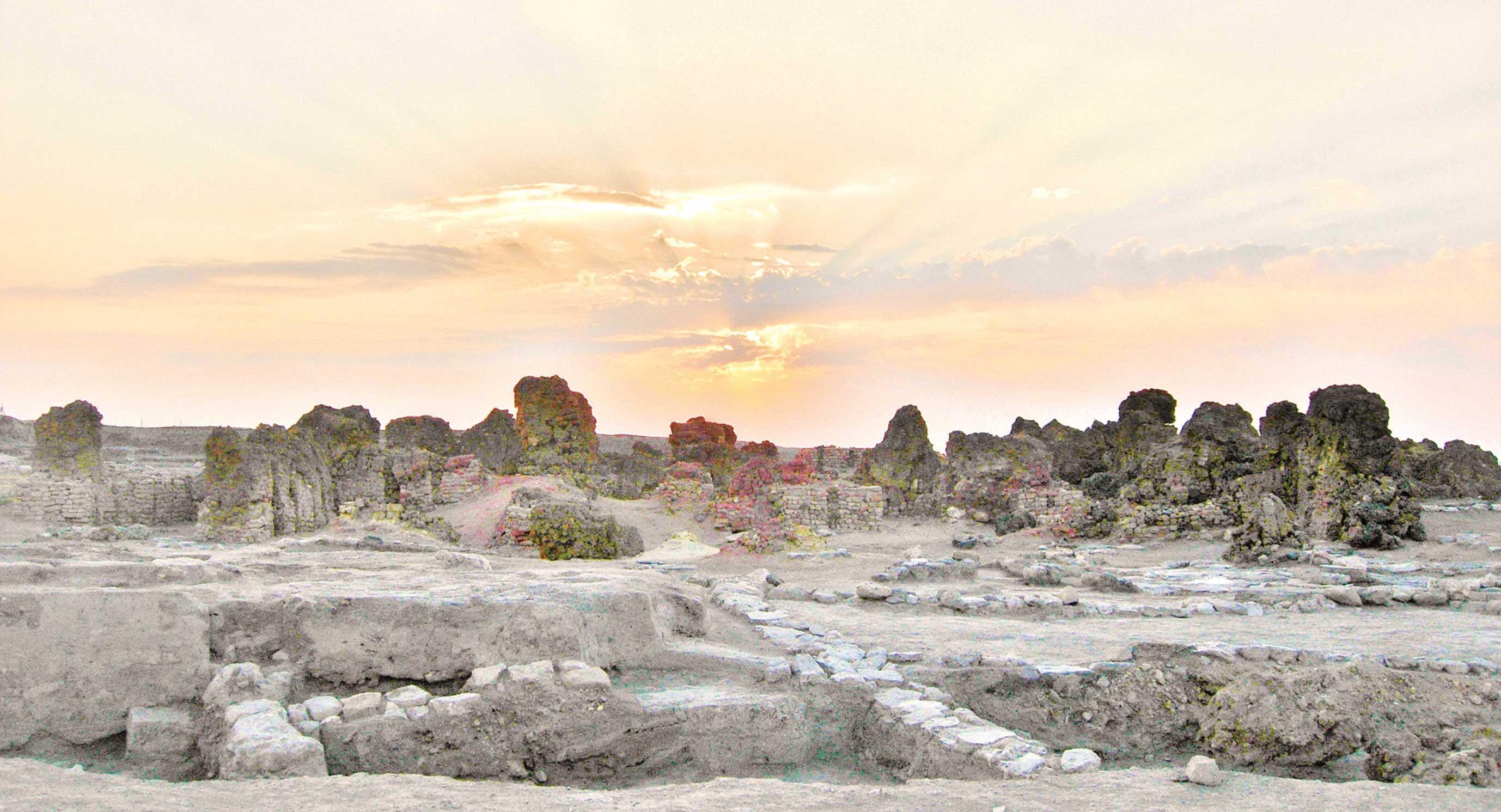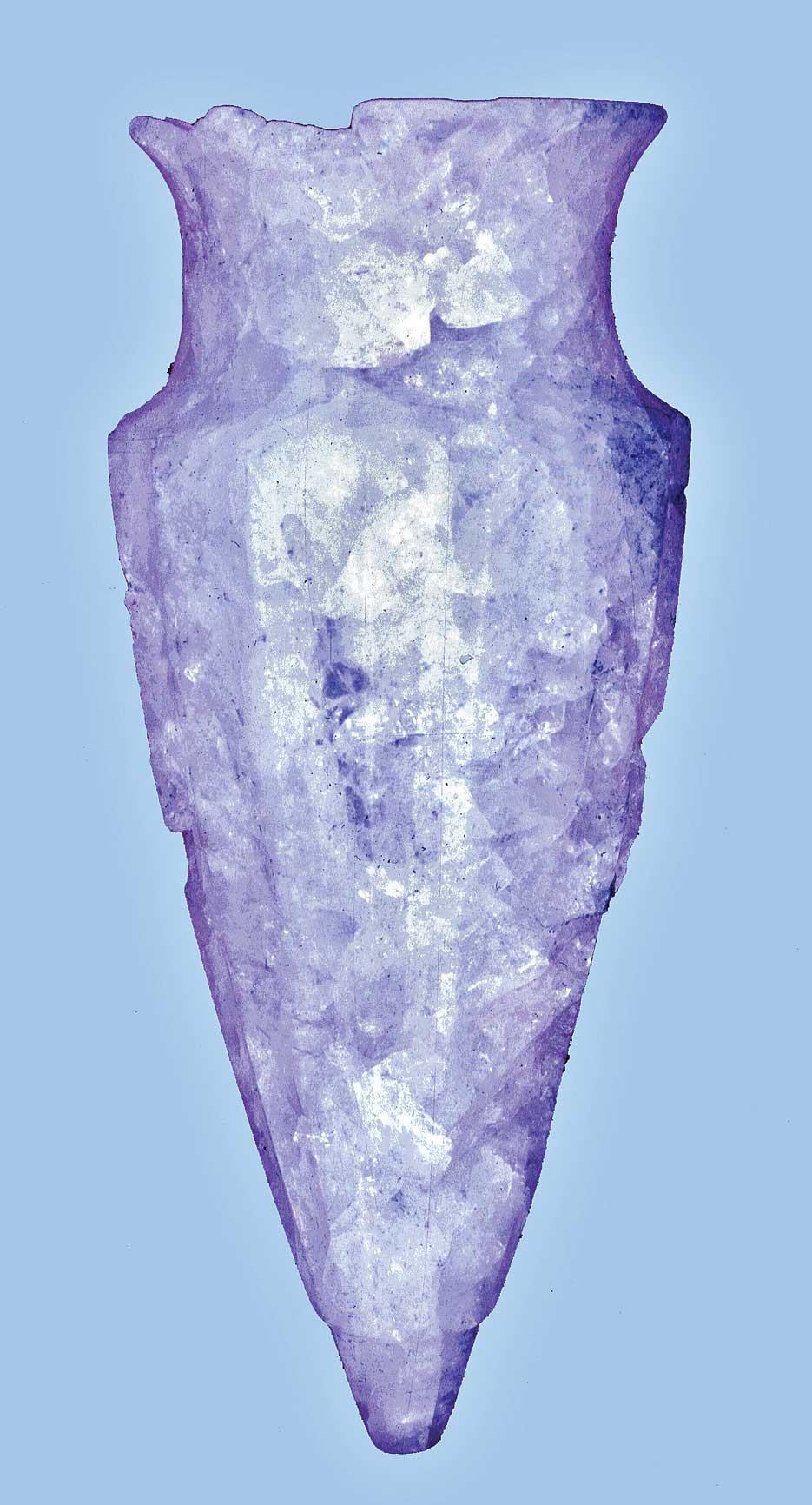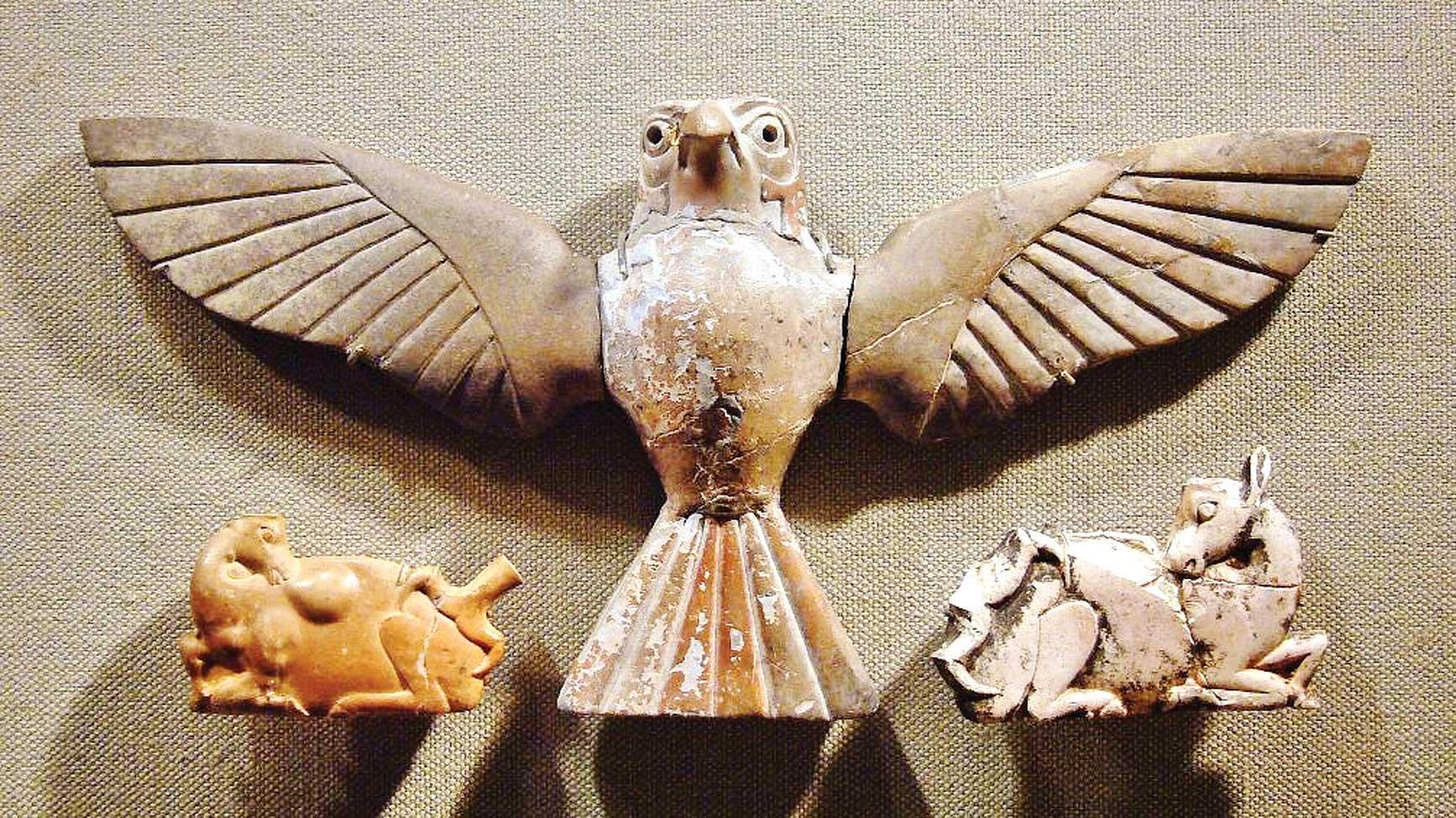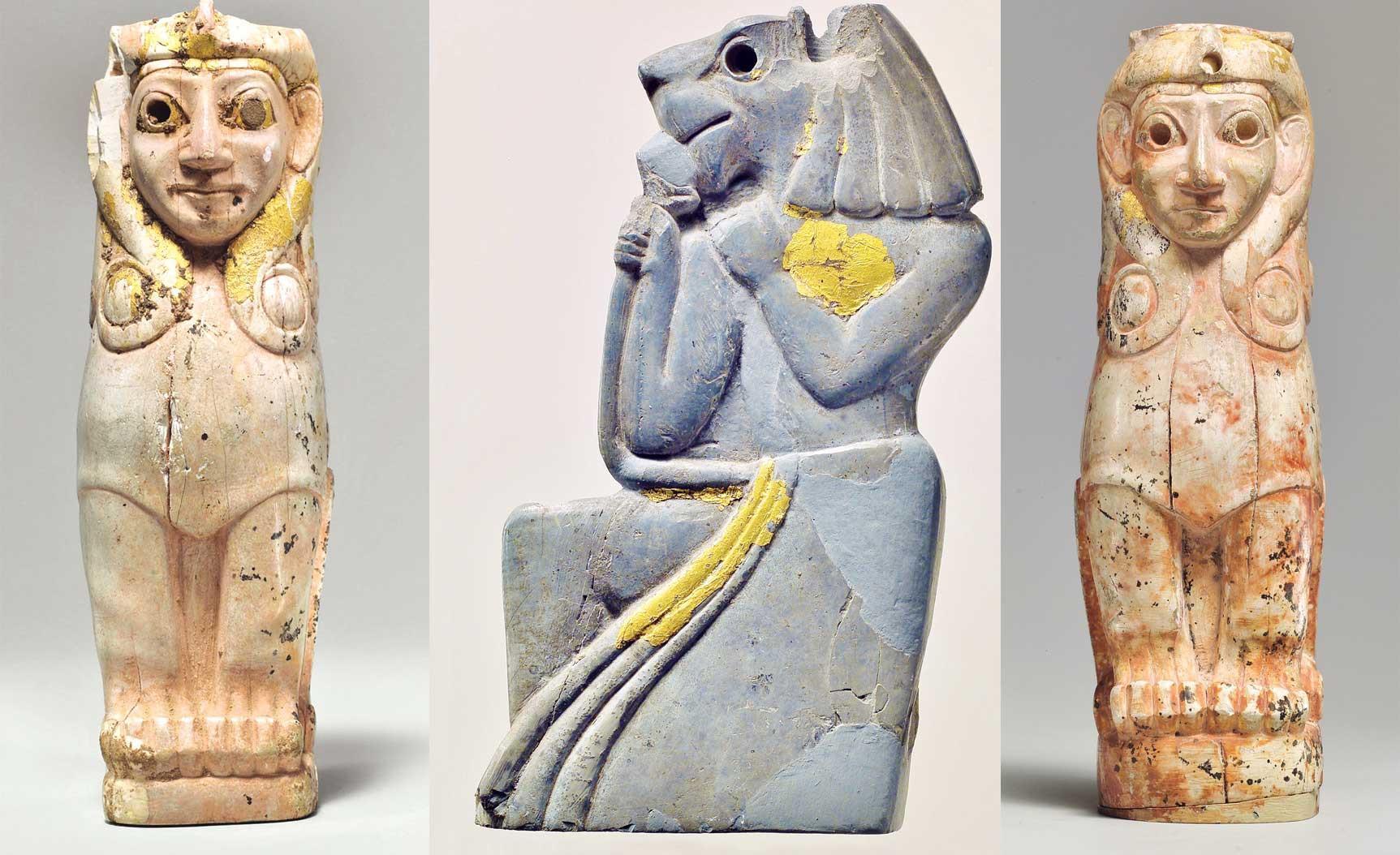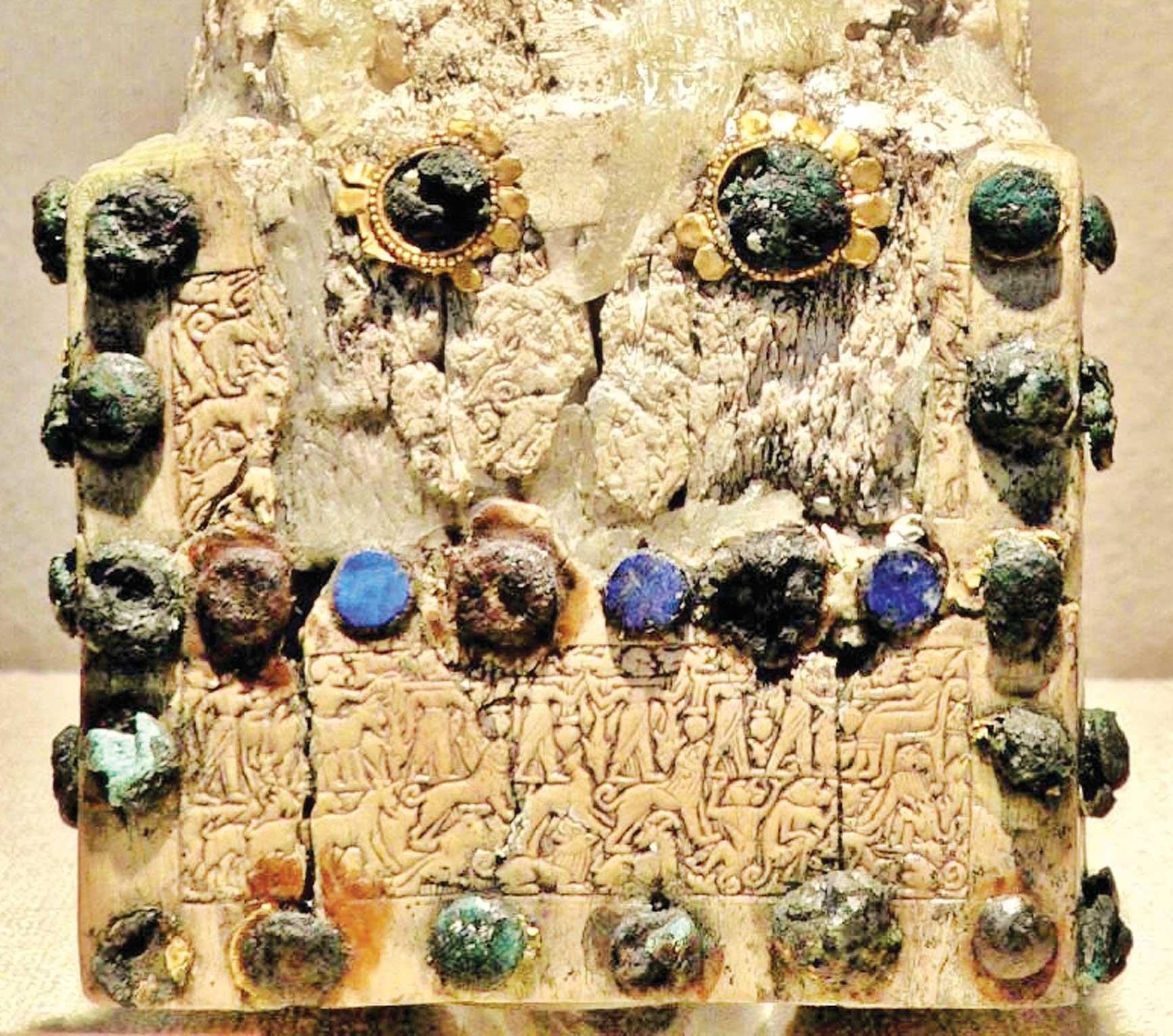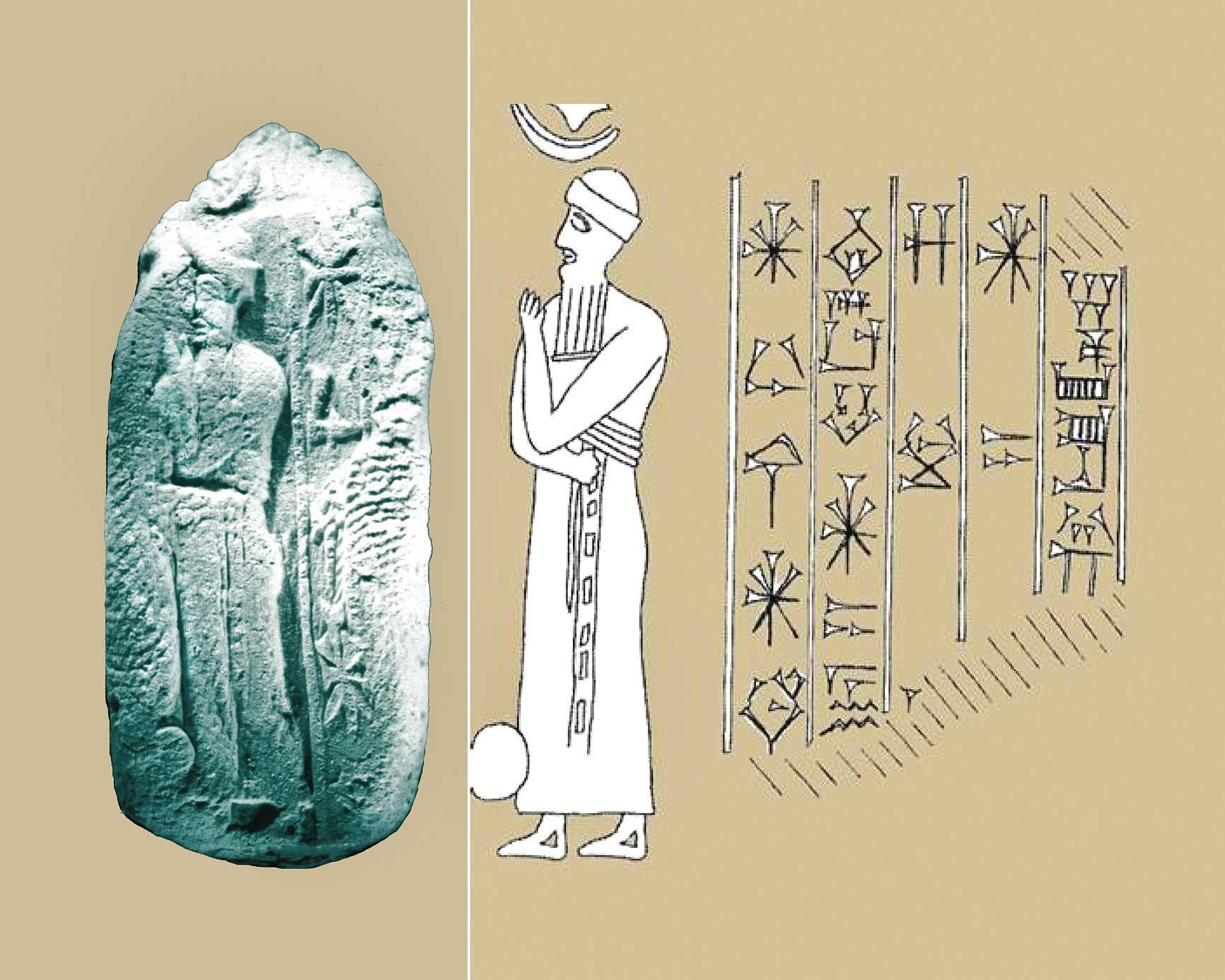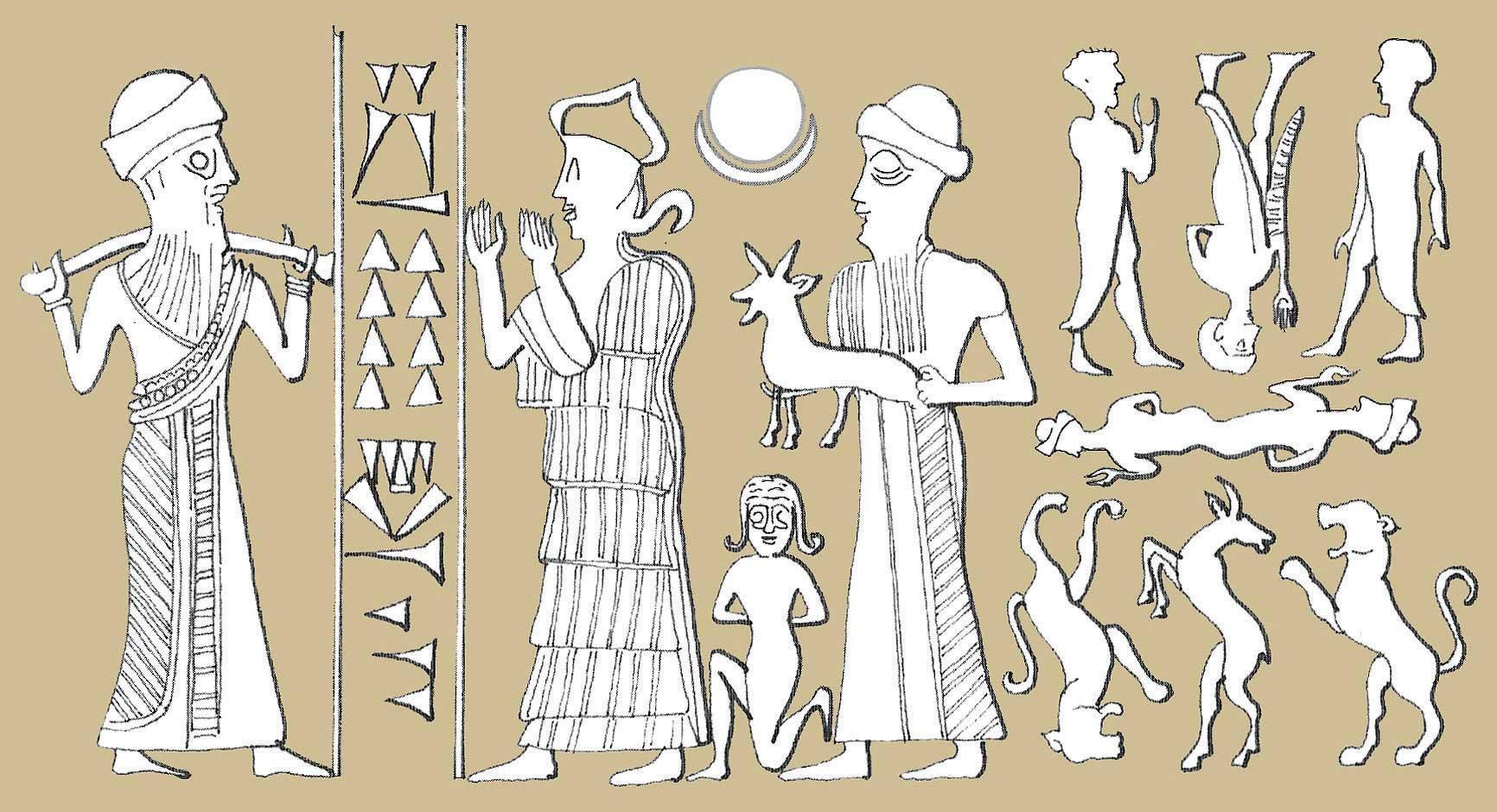Oldest Anatolian transcript found in Acemhöyük
Sergen Çirkin

The oldest known written document in Anatolia has been found during excavations in Acemhöyük Mound in the Central Anatolian province of Aksaray. The single-line inscription, carved on a piece of rock crystal, is not only the oldest one in Anatolia but also in Europe.
Located in the south of Lake Tuz, Acemhöyük Mound is one of the oldest kingdom centers in Anatolia. This center is made up of a hill (800x700 meter) and a lower city that surrounds it.
 Sunrise in Acemhöyük
Sunrise in Acemhöyük The hill was the kingdom’s acropolis, where the administrative class lived. The lower city, where traders and the public lived, was a kind of international market place.
The Acemhöyük excavations that were initiated in 1982 by Professor Nimet Özgüç have been carried out by Professor Aliye Öztan since 1989.
 Crystal weight Middle East metropolis 4,500 years ago
Crystal weight Middle East metropolis 4,500 years ago A total of 12 archaeological layers have been identified in Acemhöyük, dating back to some 4,500 years ago. Özgüç and Öztan compared the results of their excavations with written historical documents and revealed that Acemhöyük was an ancient city of Purushattum.
 Crystal vase
Crystal vase The first information about the city is mentioned in the Sartamhari (King of War) tablets, which depicts the victories of Sargon, the founder of Akkad city, located in present-day southern Iraq. According to the tablets, traders working in Purushattum complained about the local king of the city to Sargon. Then Sargon came to Anatolia climbing past the Taurus Mountains and seized the city.
 Ivory furniture decoration (hawk and antelope) Oldest known written document in Anatolia
Ivory furniture decoration (hawk and antelope) Oldest known written document in Anatolia In the old Middle East, traders used precision weights to measure their valuable goods. Lots of weights made of various materials have been found in Acemhöyük, which was one of the important trade centers in Anatolia. But a sample that was unearthed last year caused excitement in the excavation team. Because there were some cuneiform symbols on this weight.
 Ivory furniture decoration (Sphynx)
Ivory furniture decoration (Sphynx) Made up of rock crystal, the weight was found in an early Bronze Age structure. The layer of this structure dates back to 2250 B.C., according to radiocarbon dating. Therefore this crystal weight unearthed in this layer becomes the oldest known written document in Anatolia and Europe.
Öztan says works have still been carried out by cuneiform experts to read the inscription. That the symbols on the weight are not readable enough makes the analysis of the inscription hard. This is why it is not still understood if the inscription was written in a local Anatolian language or the international language of the era, Akkadian. But after all, this small finding of 10.4 grams has already gained the title of being the oldest known written document in Anatolia.
 Ivory box Silver city of the Middle East: Purushattum
Ivory box Silver city of the Middle East: Purushattum
Assyrian traders in northern Iraq established international markets in Anatolia 4,000 years ago. They brought luxurious fabrics and tins to Anatolia and brought silver to Assyria from Anatolia. The weights were used to measure valuable goods like silver in such exchanges.
According to cuneiform tablets, the Purushattum silver was very famous among the Assyrian traders. Many traders turned their earnings into high-quality Purushattum silver and returned to Assyria.
 Seal impression of Assyrian King Shamsi Adad
Seal impression of Assyrian King Shamsi AdadThe Purushattum kings, who became richer thanks to this international trade, were using gilded ivory furniture, vases made of crystal or obsidian and wearing dresses made of imported Mesopotamian fabric.
 Seal impression of Carchemish king AplahandaClay witness of international trade
Seal impression of Carchemish king AplahandaClay witness of international trade Cylinder seals and their impression seals provide very important information about the economy history of the ancient Middle East because most of the tradeable goods did not reach the present day. But the seals that were attached to the packages of these goods have been easily kept for thousands of years.
Traders in the ancient Middle East attached a piece of wet mud on the packages they sent and impressed seal with their own names on this mud. These seals were like today’s cargo tags.
 Sealed storage boxes
Sealed storage boxesThe impression seals found in Acemhöyük reveal how the city was a busy center in the trade of the Middle East. Among them are samples owned by the Assyrian King Shamsi Adad I, Syrian princess Nagihanum and Carchemish king Aplahanda. All these people were the super powers of the world trade 4,000 years ago.
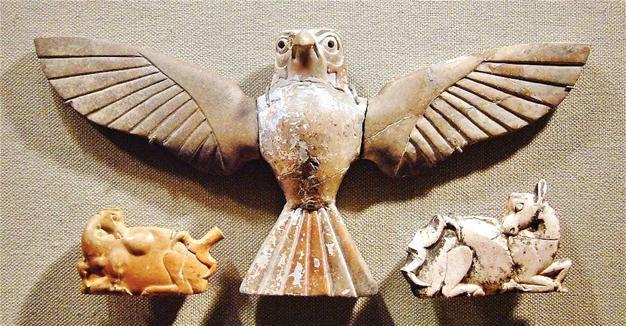 The oldest known written document in Anatolia has been found during excavations in Acemhöyük Mound in the Central Anatolian province of Aksaray. The single-line inscription, carved on a piece of rock crystal, is not only the oldest one in Anatolia but also in Europe.
The oldest known written document in Anatolia has been found during excavations in Acemhöyük Mound in the Central Anatolian province of Aksaray. The single-line inscription, carved on a piece of rock crystal, is not only the oldest one in Anatolia but also in Europe. 